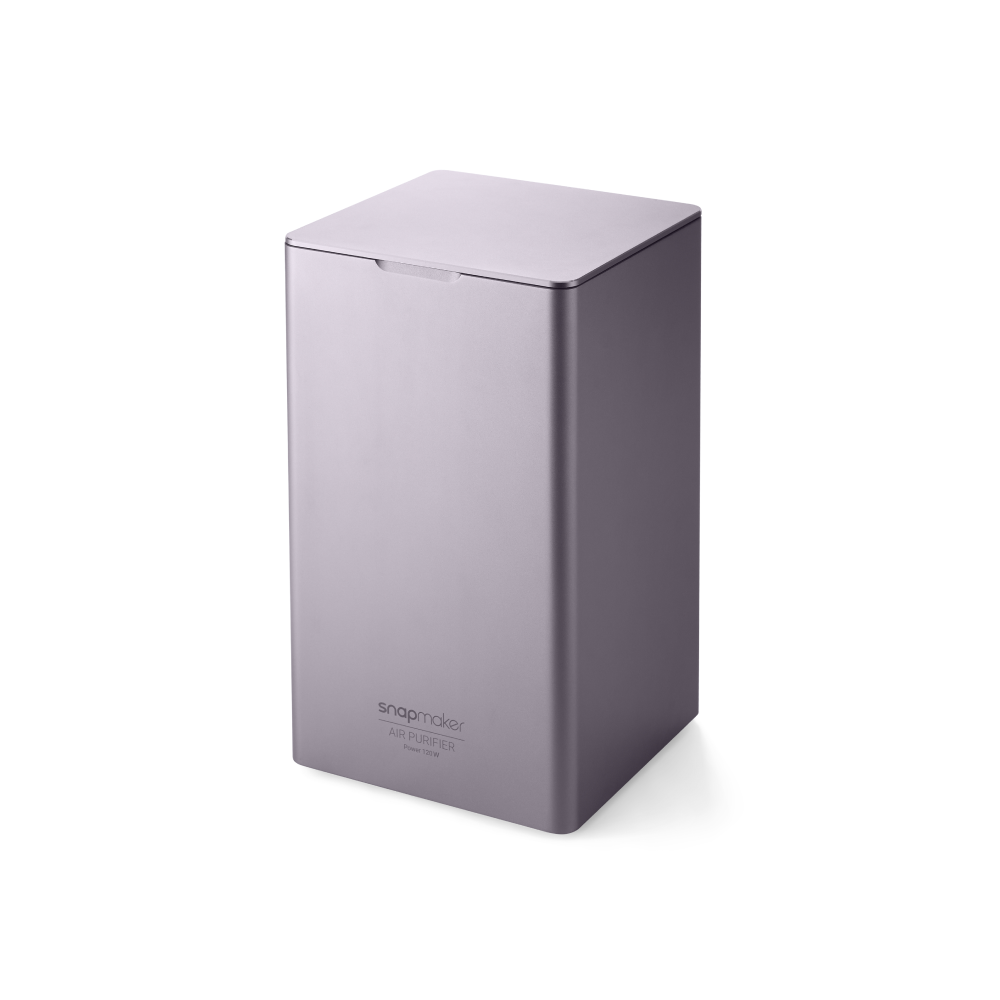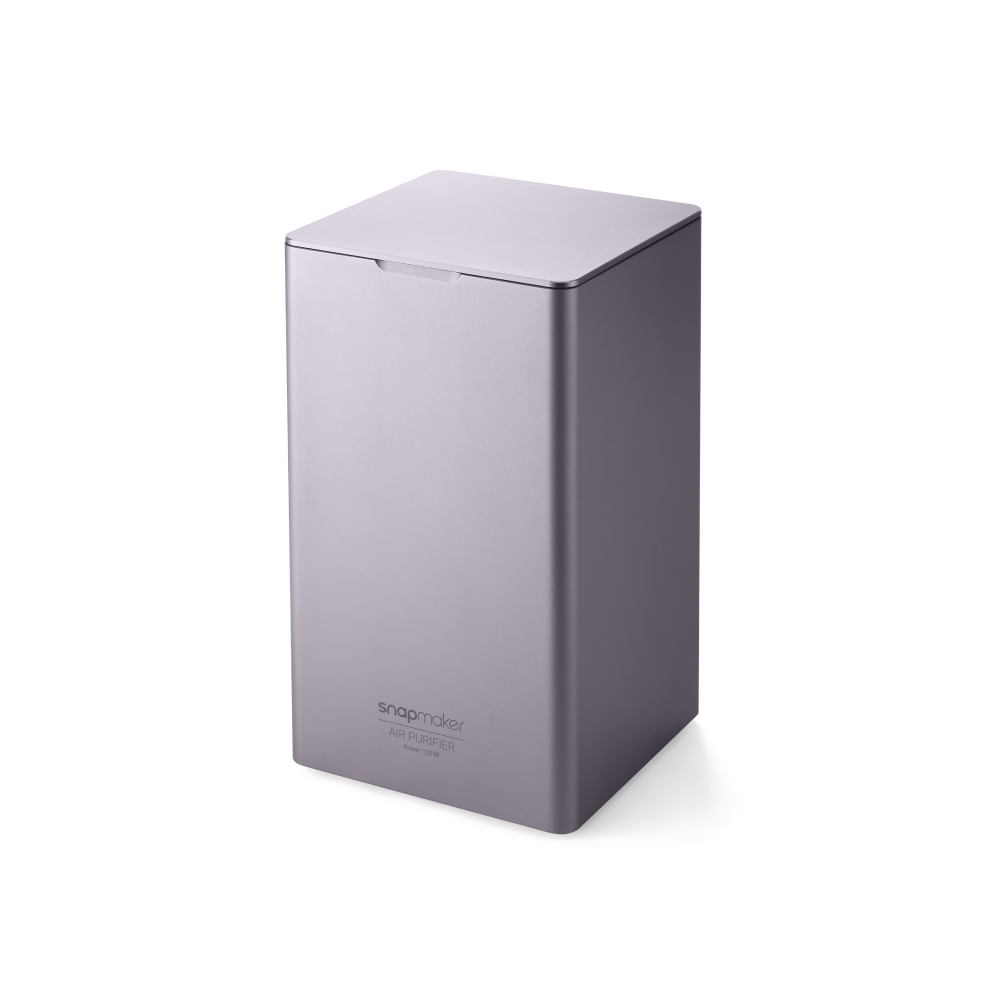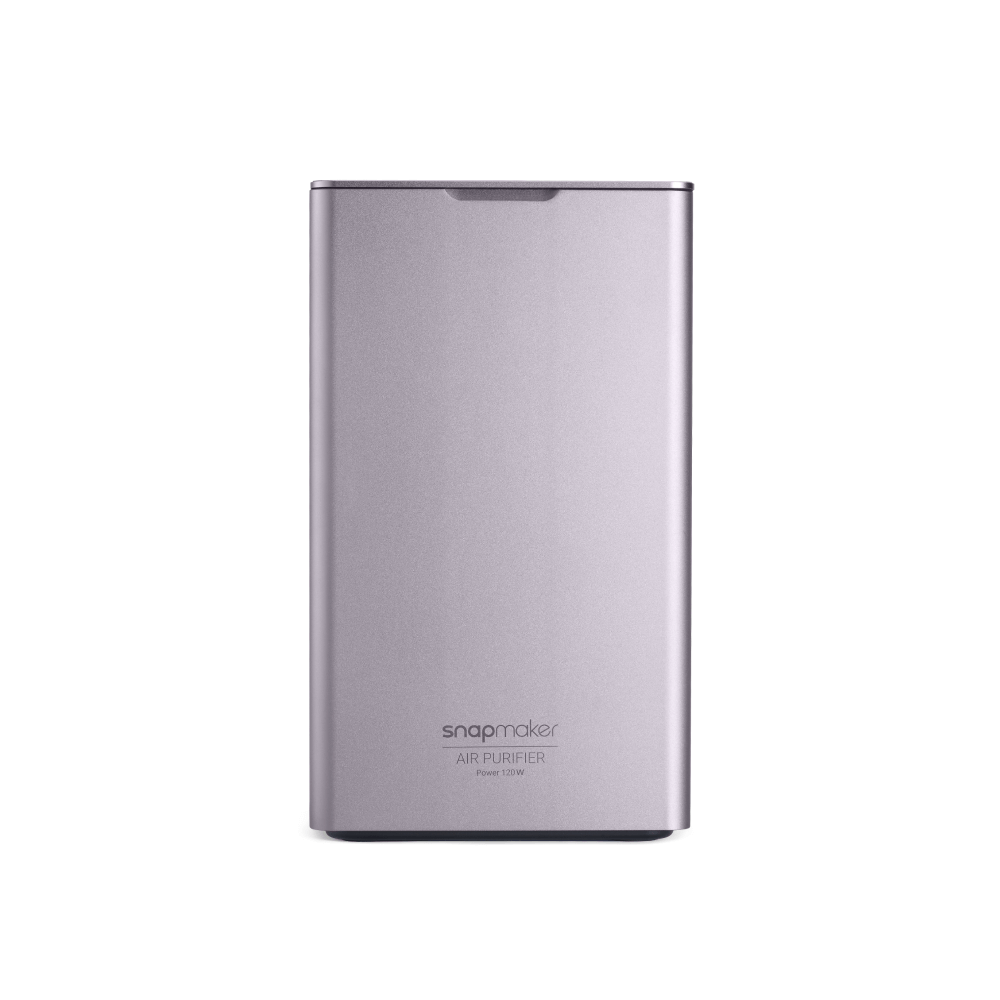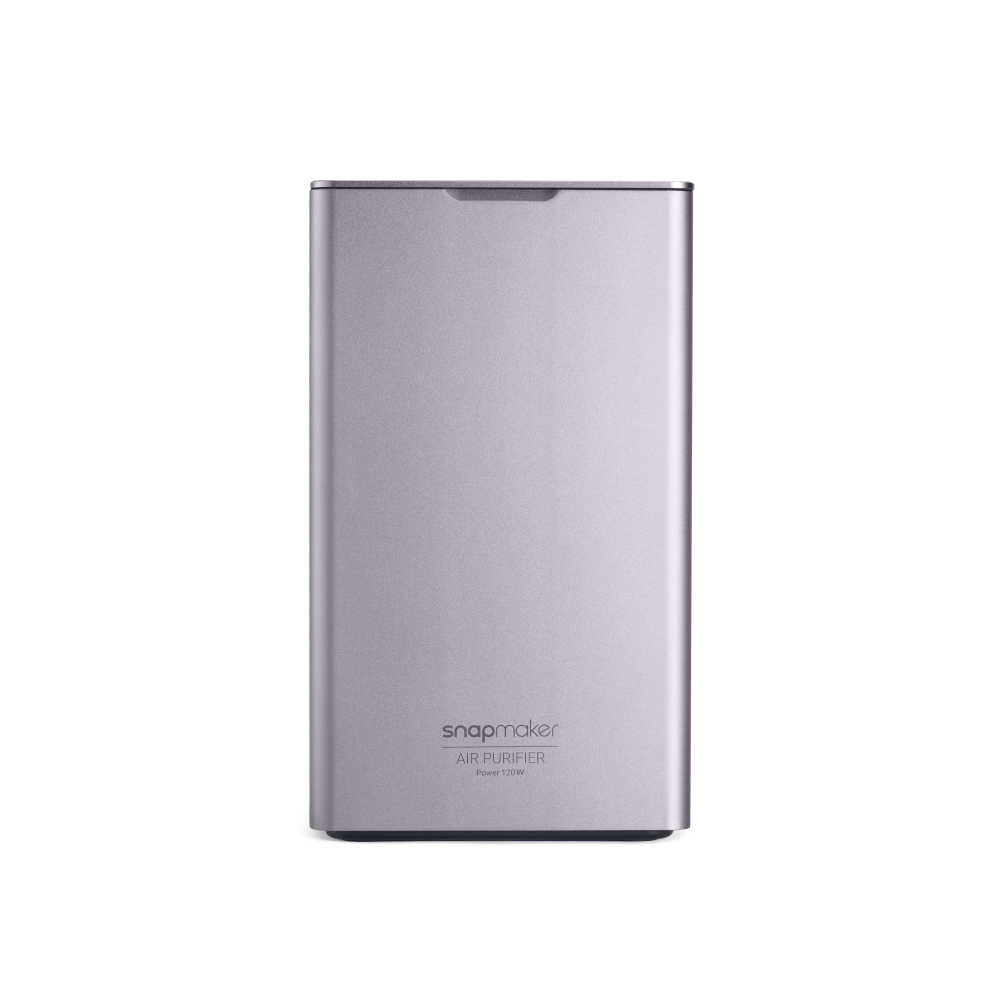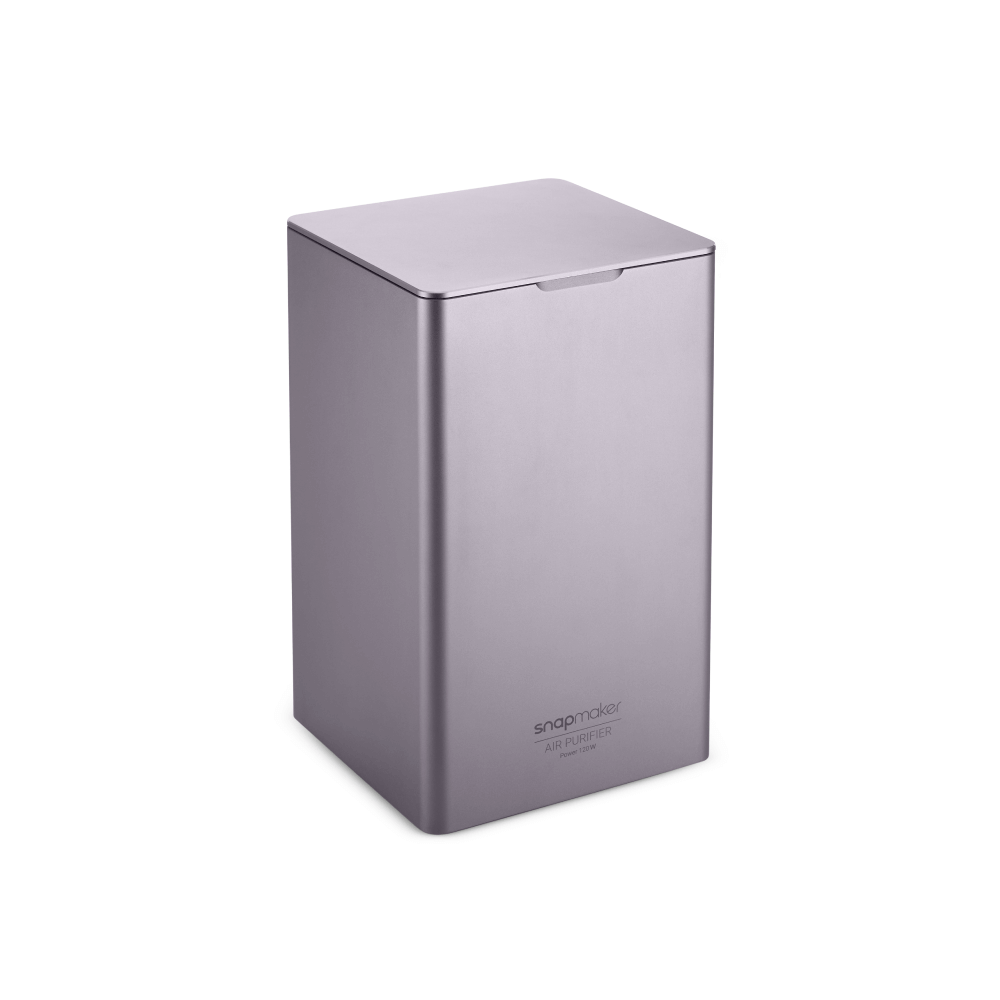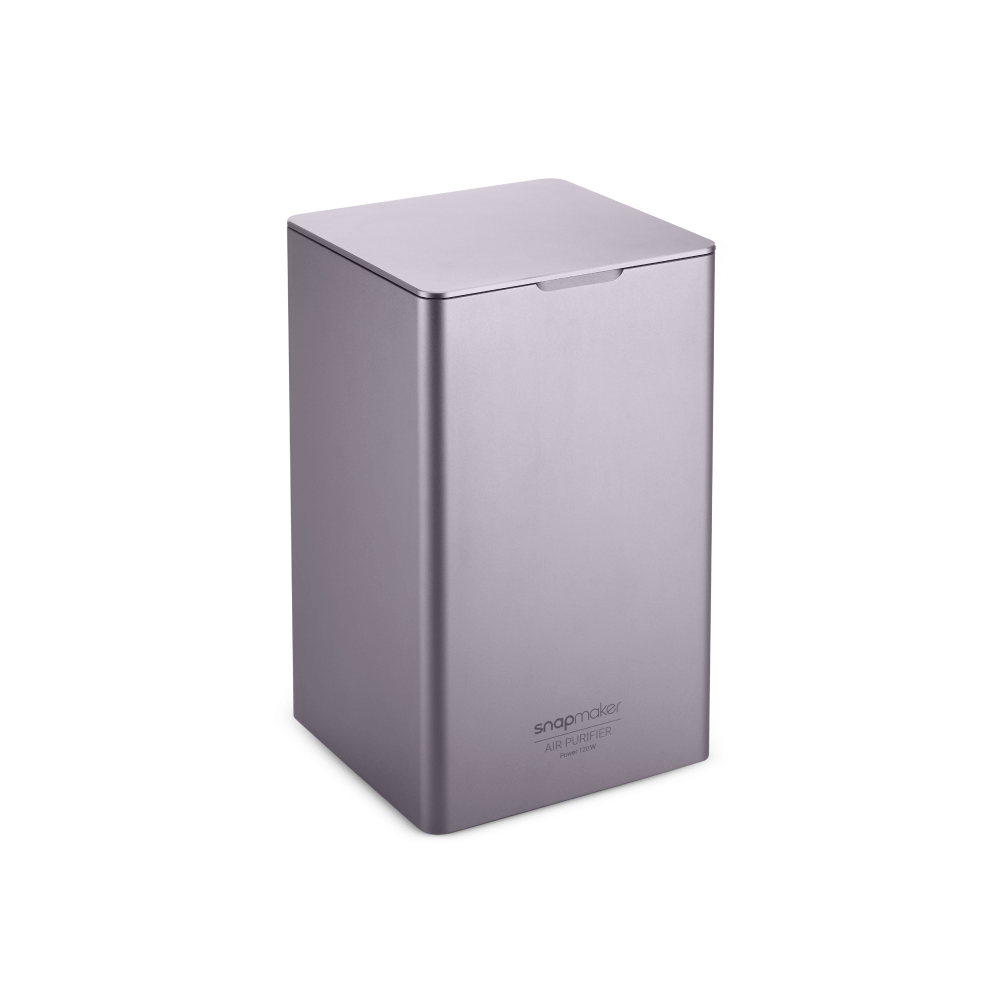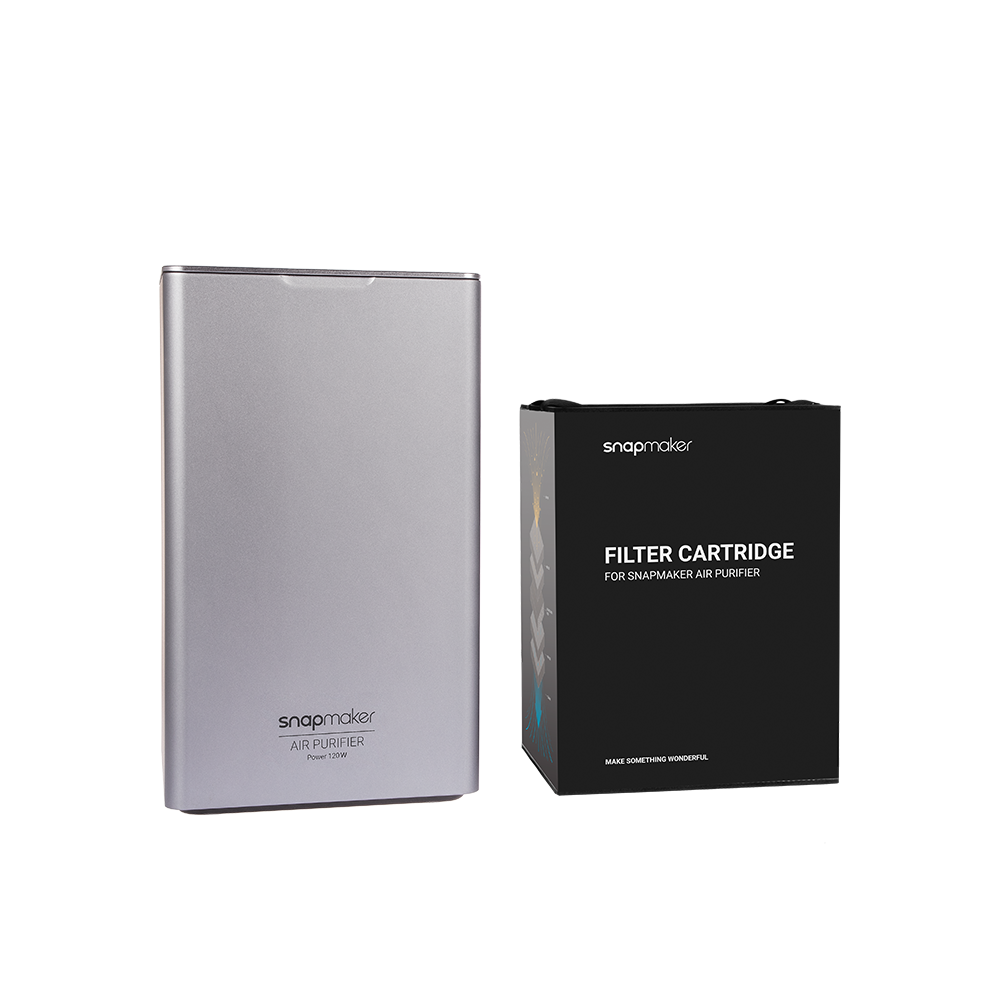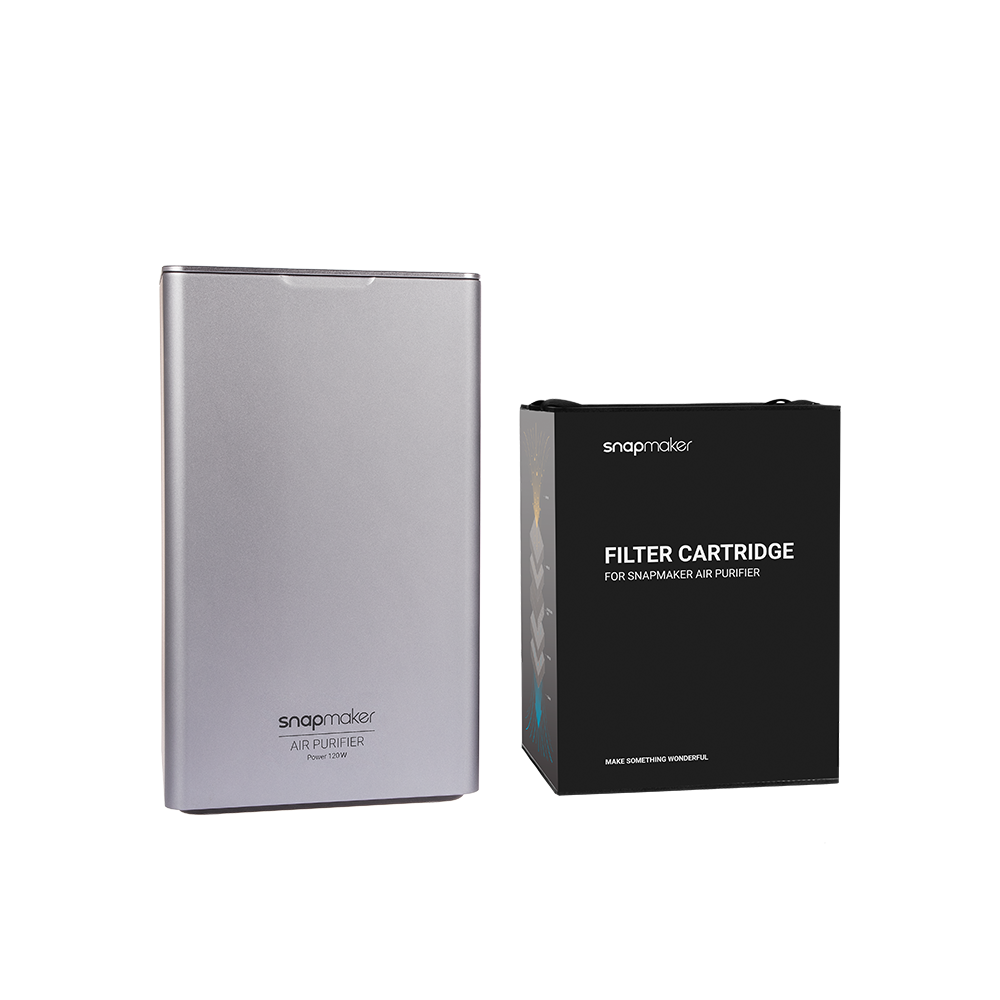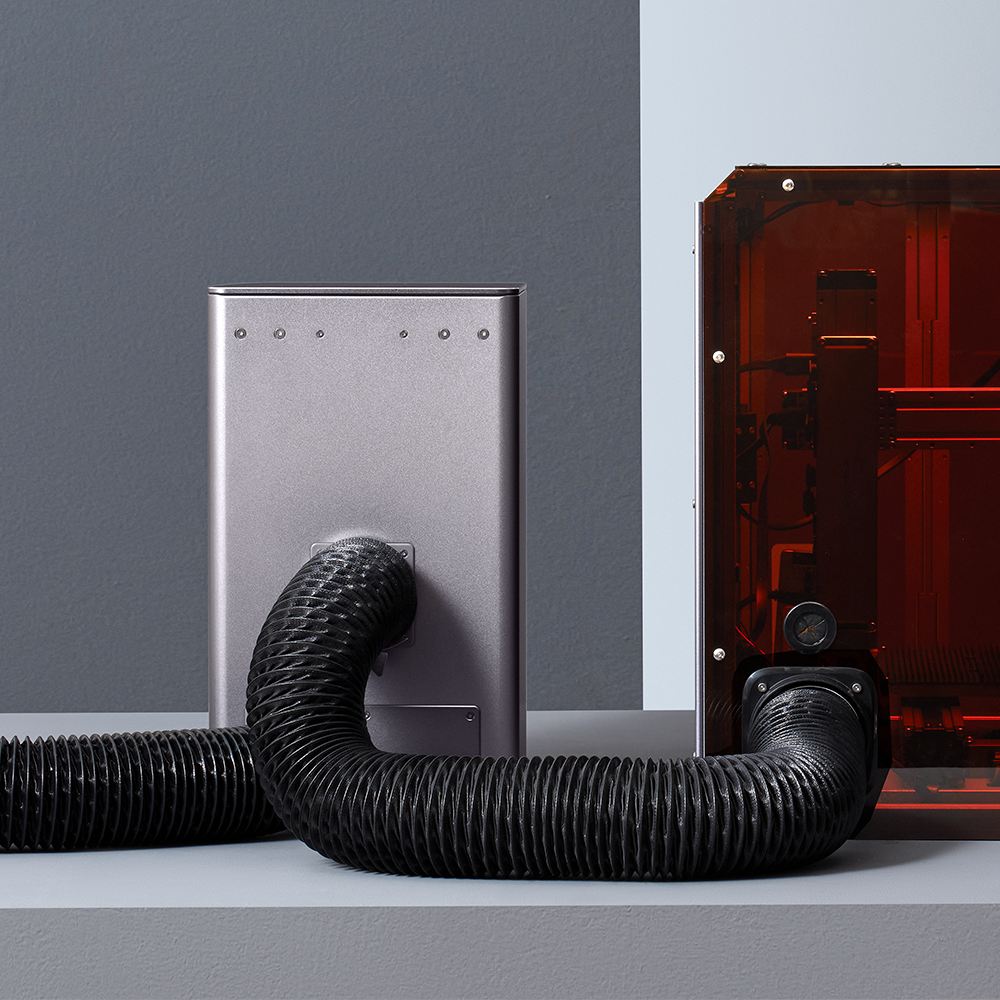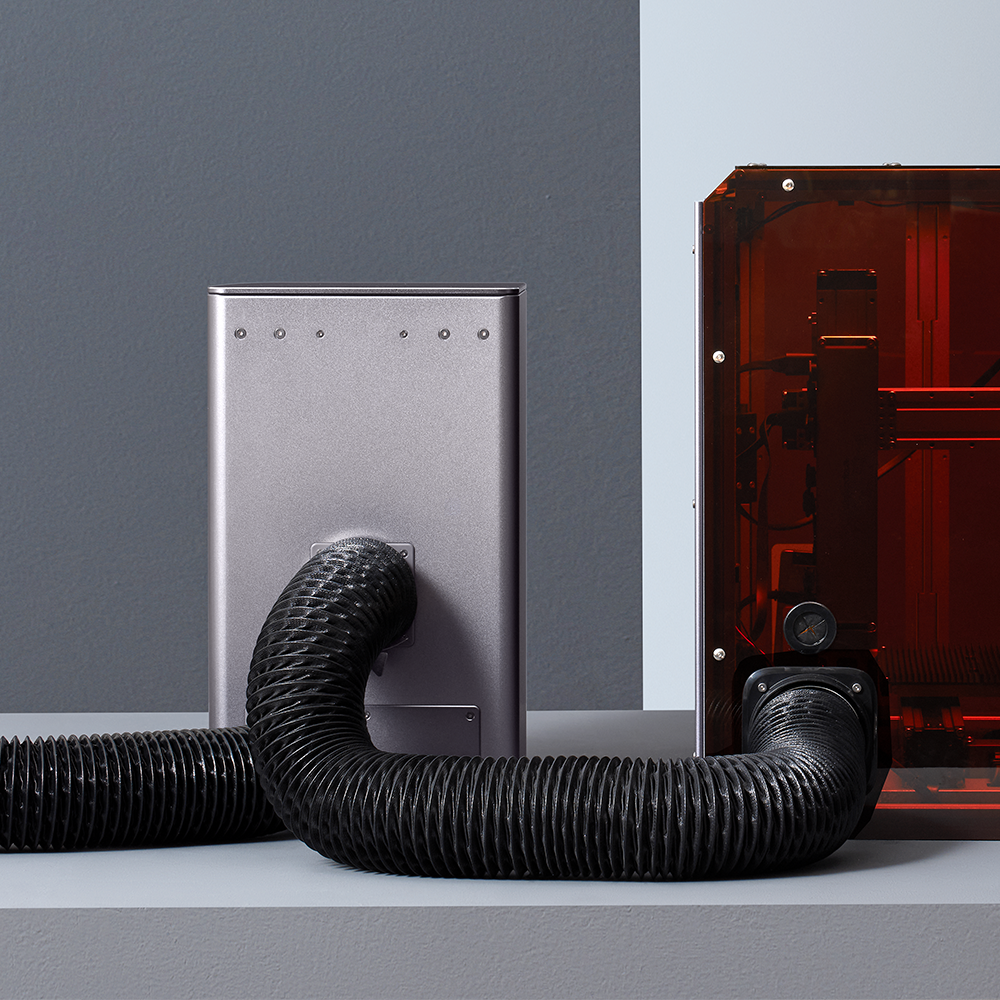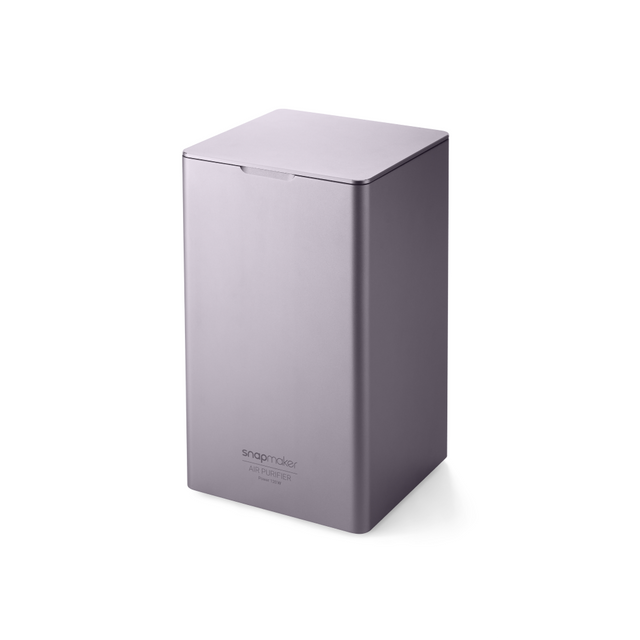Snapmaker Luftreiniger (inkl. MwSt.)

• PM- und VOC-Filtration: Hohe Filtrationseffizienz von 95,9 % für PM0,3
• Maßgeschneiderte Filterkartusche: Fünf Schichten verschiedener Filter in einer zusammengefasst; Echtzeitüberwachung des Filterkartuschenstatus und der Lebensdauer
• Kompatibilität: Snapmaker 2.0, Snapmaker Artisan, Snapmaker Ray
4+ rolls at €19.99/roll, 8+ rolls at just €18.99/roll

SnapSpeed PLA Filament (1kg)
€22,90 €26,99

Matte PLA Filament (1kg)
€22,90 €23,99
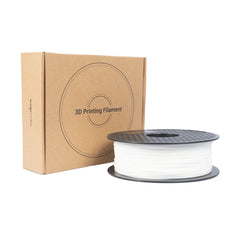
PLA-Filament (1 kg)
€22,90 €28,99
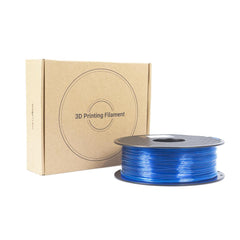
PETG-Filament (1 kg)
€22,90 €28,99
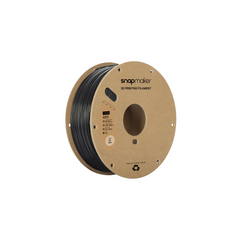
ABS-Filament (1kg)
€22,90 €28,99
Verfügbarkeit für Abholungen konnte nicht geladen werden
Payment methods
A New Level of Air Safety
Chemicals such as PM (Particle Matters) and VOCs (Volatile Organic Compounds) can be released when you 3D print with or laser engrave on certain types of materials. You can further filter them with a Snapmaker 2.0 Air Purifier.
Exclusive Filter Cartridge
Filter Detection
Filter Life Detection
Fan Speed Control
Status Light
Full-metal Design
The Exact Filter Cartridge You Need
Tailor-made filter cartridge for your Snapmaker 2.0, with five layers of different filters consolidated into one, it is designed to absorb what's actually emitted during laser engraving or 3D printing process [1].
G4 Filter for Coarse Filtration
Aims at relatively bigger particles (≥ 5 μm in diameter). It filters out more than 90% of PM10 and PM5.
PM10
PM5
Particles
Dust
F9 Filter for Finer Filtration
Works at particles that measure 1 μm or above in diameter. It filters out more than 95% of PM10, PM5 and PM2.5.
PM10
PM5
PM2.5
Customized Activated Carbon Filter
A dense pack of activated carbon is also added to absorb VOCs that no other filters can capture. Unpleasant odor is no longer a problem.
VOCs
Ultra-dense HEPA H13 Filter
Two layers of 70 mm-thick HEPA H13 filter as the final stage gate. They are able to trap up to 99.97% of airborne particles of all sizes, including PM0.3 that are known to be the most penetrating particles in the air.
PM2.5
PM0.3
All in one, Snapmaker Air Purifier can be a pretty efficient emissions eliminator [2].
- 40W
- 10W
- 2W
- 1.6W
- 20W
Snapmaker 40W Laser Module Test Data
Snapmaker 10W Laser Module Test Data
Snapmaker 2W Laser Module Test Data
Snapmaker 1.6W Laser Module Test Data
Snapmaker 20W Laser Module Test Data
Long Live the Filter Cartridge
Efficiency is not all that matters. The different levels of filter are arranged in certain order inside the cartridge to maximize its lifespan, so that you won't need to replace the cartridge until it gets fully used.
Filter Life Detection
Snapmaker 2.0 carries out a real-time monitoring on the Filter Cartridge and shows its lifespan on the Touchscreen. It lets you know when it's time to pop in a new one.
Be in the Know
The built-in LED strip shows you how the Air Purifier is working through its color change, flowing, breathing, and flashing.
Unpowered
Working normally
Connecting to the Controller
Filter Cartridge taken out
Low filter life or blocked inlet/outlet
Danger
Fan Speed Control
Tap on the Touchscreen to set fan speed for different types of job [3].
Full-metal Design
Both the Enclosure and the Air Purifier are neatly designed as ever. The CNC-machined aluminum beams and shell, with their surface anodized, deliver great durability, super-fine texture, a consistent silver gray looking, as well as well-sealed machine bodies. They're powerful, yet adorable.
Creativeness knows no bounds
Along with the CAN Hub, you can use the Enclosure and the Air Purifier together with all the existing and upcoming Snapmaker 2.0 addons.
Specifications
(With Air Oulet Connecter)
Air Inlet Diameter
70 mm
Air Volume
150 m³/h
Cable Length
2,000 mm
Clamp Diameter
65–89 mm
Filter Cartridge Dimensions (W × D × H)
191 × 229 × 308 mm
Filter Cartridge Lifespan[4]
Approx. 3 months
Filter Cartridge Weight
2.4 kg
Filtration Efficiency (0.3–0.5 μm)[5]
95.9%
Hose Dimensions (Diameter × L)
75 × 2,000 mm
Input Voltage
AC 100 V – 240 V
Maximum Noise (With Hose)
65 dB
Package Dimensions (W × D × H)
316 × 360 × 595 mm
Package Weight
12.7 kg
Power Cord Length
2,000 mm
Rated Current
5A
Rated Power
120 W
Rated Voltage
24 V DC
Operating Temperature
0°C–35°C
Storage Temperature
-4°C–45°C
Outer Shell Material
Aluminum alloy
Approvals
CE, FCC, UL62368, IC, RCM, ROHS, WEEE
In the Box
Air Purifier × 1
Cover × 1
Filter Cartridge × 1
Hose × 1
Hose Clamp × 2
Quick Start Guide × 1
Connecting Cable × 1
Power Adapter × 1
[1] Using the Air Purifier when printing with ABS or other thermo-sensitive filaments may lead to poor printing quality. If you need to filter 3D printing emissions, it's recommended to turn on the Air Purifier after printing job is finished.
[2] The data is sourced from the Snapmaker Testing Laboratory. With the enclosure and the enclosure fan in use, the 1.6W, 10W, 20W, and 40W laser modules were used to continuously cut 2mm, 3mm, and 5mm basswood sheets for 5 minutes, while the 2W laser module was used to cut a 3mm dark acrylic sheet. The particulate matter (PM) and total volatile organic compound (TVOC) concentrations were measured at the exhaust duct outlet.
Due to variations in usage conditions and environments, the specific performance and results in actual use may differ from the provided data. Snapmaker shall not be held responsible for any discrepancies or consequences resulting from such environmental changes.
[3] The Touchscreen UI is subject to change due to iterations.
[4] This data is obtained under the condition of typical laser use, and is for reference only.
[5] 0.3 μm corresponds to the worst case. Particles that are larger or smaller can be filtered with even higher efficiency.
Frequently Asked Questions
1. What particles do 3D printers emit?
When you 3D print, the process can release ultrafine particles (UFPs), volatile organic compounds (VOCs), and fine dust known as PM2.5. These can sometimes cause respiratory issues or skin irritation. Common filaments like ABS, PLA, PET, and nylon can emit VOCs, even before they reach their melting points.
2. Is air purifier necessary for PLA 3D printing?
PLA emits significantly less compared to ABS, potentially due to its lower printing temperature. But different PLA brands can behave differently, so using an air purifier for 3D printing is still a smart move for your health.
Snapmaker Air Purifier ensures exceptional filtration efficiency with its 5-layer integrated system, featuring 2 HEPA H13 filters as the final stage, capable of capturing up to 99.97% of airborne particles of all sizes.
3. What is an HEPA filter?
HEPA filters (High Efficiency Particulate Air) trap harmful particles by forcing air through a fine mesh, removing 99.97% of particles as small as 0.3 microns.
Equipped with two 70mm-thick HEPA H13 filters, the Snapmaker Air Purifier ensures superior air safety, effectively capturing ultrafine particles for cleaner workspace.
4. What kind of particle can each air filter deal with?
G4 Filter: Catches larger particles (≥ 5 μm), filtering over 90% of PM10 and PM5.
F9 Filter: Captures particles 1 μm and above, filtering over 95% of PM10, PM5, and PM2.5.
Activated Carbon Filter: Absorbs VOCs and eliminates odors that other filters can't handle.
HEPA H13 Filter: Traps 99.97% of airborne particles of all sizes, including the smallest PM0.3 particles.
5. How often should I change my filter cartridge?
Based on our lab test, the lifespan is approximately 3 months, but it still depends on the material, scenario, frequency, and so on. You can check on the touchscreen for remaining filter life. The machine will prompt you to replace the cartridge when its life is running low.
Accumulated particles will eventually clog the filter, and affect the blower's performance. Always remember do not wash the filter cartridge; simply replace it when needed.
A New Level of Air Safety
Chemicals such as PM (Particle Matters) and VOCs (Volatile Organic Compounds) can be released when you 3D print with or laser engrave on certain types of materials. You can further filter them with a Snapmaker 2.0 Air Purifier.
Exclusive Filter Cartridge
Filter Detection
Filter Life Detection
Fan Speed Control
Status Light
Full-metal Design
The Exact Filter Cartridge You Need
Tailor-made filter cartridge for your Snapmaker 2.0, with five layers of different filters consolidated into one, it is designed to absorb what's actually emitted during laser engraving or 3D printing process[1].
G4 Filter for Coarse Filtration
Aims at relatively bigger particles (≥ 5 μm in diameter). It filters out more than 90% of PM10 and PM5.
PM10
PM5
Particles
Dust
F9 Filter for Finer Filtration
Works at particles that measure 1 μm or above in diameter. It filters out more than 95% of PM10, PM5 and PM2.5.
PM10
PM5
PM2.5
Customized Activated Carbon Filter
A dense pack of activated carbon is also added to absorb VOCs that particulate matter filters can't capture. Unpleasant odor is no longer a problem.
VOCs
Ultra-dense HEPA H13 Filter
Two layers of 70 mm-thick HEPA H13 filter as the final stage gate. They are able to trap up to 99.97% of airborne particles of all sizes, including PM0.3 that are known to be the most penetrating particles in the air.
PM2.5
PM0.3
All in one, Snapmaker Air Purifier can be a pretty efficient emissions eliminator [2].
- 40W
- 10W
- 2W
- 1.6W
- 20W
Snapmaker 40W Laser Module Test Data
Snapmaker 10W Laser Module Test Data
Snapmaker 2W Laser Module Test Data
Snapmaker 1.6W Laser Module Test Data
Snapmaker 20W Laser Module Test Data
Long Live the Filter Cartridge
Efficiency is not all that matters. The different levels of filter are arranged in certain order inside the cartridge to maximize its lifespan, so that you won't need to replace the cartridge until it gets fully used.
Filter Life Detection
Snapmaker 2.0 carries out a real-time monitoring on the Filter Cartridge and shows its lifespan on the Touchscreen. It lets you know when it's time to pop in a new one.
Be in the Know
The built-in LED strip shows you how the Air Purifier is working through its color change, flowing, breathing, and flashing.
Unpowered
Working normally
Connecting to the Controller
Filter Cartridge taken out
Low filter life or blocked inlet/outlet
Danger
Fan Speed Control
Tap on the Touchscreen to set fan speed for different types of job [3].
Full-metal Design
Both the Enclosure and the Air Purifier are neatly designed as ever. The CNC-machined aluminum beams and shell, with their surface anodized, deliver great durability, super-fine texture, a consistent silver gray looking, as well as well-sealed machine bodies. They're powerful, yet adorable.
Creativeness knows no bounds
Along with the CAN Hub, you can use the Enclosure and the Air Purifier together with all the existing and upcoming Snapmaker 2.0 addons.
Specifications
(With Air Oulet Connecter)
Air Inlet Diameter
70 mm
Air Volume
150 m³/h
Cable Length
2,000 mm
Clamp Diameter
65–89 mm
Filter Cartridge Dimensions (W × D × H)
191 × 229 × 308 mm
Filter Cartridge Lifespan[4]
Approx. 3 months
Filter Cartridge Weight
2.4 kg
Filtration Efficiency (0.3–0.5 μm)[5]
95.9%
Hose Dimensions (Diameter × L)
75 × 2,000 mm
Input Voltage
AC 100 V – 240 V
Maximum Noise (With Hose)
65 dB
Package Dimensions (W × D × H)
316 × 360 × 595 mm
Package Weight
12.7 kg
Power Cord Length
2,000 mm
Rated Current
5A
Rated Power
120 W
Rated Voltage
24 V DC
Operating Temperature
0°C–35°C
Storage Temperature
-4°C–45°C
Outer Shell Material
Aluminum alloy
Approvals
CE, FCC, UL62368, IC, RCM, ROHS, WEEE
In the Box
Air Purifier × 1
Cover × 1
Filter Cartridge × 1
Hose × 1
Hose Clamp × 2
Quick Start Guide × 1
Connecting Cable × 1
Power Adapter × 1
[1] Using the Air Purifier when printing with ABS or other thermo-sensitive filaments may lead to poor printing quality. If you need to filter 3D printing emissions, it's recommended to turn on the Air Purifier after printing job is finished.
[2] The data is sourced from the Snapmaker Testing Laboratory. With the enclosure and the enclosure fan in use, the 1.6W, 10W, 20W, and 40W laser modules were used to continuously cut 2mm, 3mm, and 5mm basswood sheets for 5 minutes, while the 2W laser module was used to cut a 3mm dark acrylic sheet. The particulate matter (PM) and total volatile organic compound (TVOC) concentrations were measured at the exhaust duct outlet.
Due to variations in usage conditions and environments, the specific performance and results in actual use may differ from the provided data. Snapmaker shall not be held responsible for any discrepancies or consequences resulting from such environmental changes.
[3] The Touchscreen UI is subject to change due to iterations.
[4] This data is obtained under the condition of typical laser use, and is for reference only.
[5] 0.3 μm corresponds to the worst case. Particles that are larger or smaller can be filtered with even higher efficiency.
Frequently Asked Questions
1. What particles do 3D printers emit?
When you 3D print, the process can release ultrafine particles (UFPs), volatile organic compounds (VOCs), and fine dust known as PM2.5. These can sometimes cause respiratory issues or skin irritation. Common filaments like ABS, PLA, PET, and nylon can emit VOCs, even before they reach their melting points.
2. Is air purifier necessary for PLA 3D printing?
PLA emits significantly less compared to ABS, potentially due to its lower printing temperature. But different PLA brands can behave differently, so using an air purifier for 3D printing is still a smart move for your health.
Snapmaker Air Purifier ensures exceptional filtration efficiency with its 5-layer integrated system, featuring 2 HEPA H13 filters as the final stage, capable of capturing up to 99.97% of airborne particles of all sizes.
3. What is an HEPA filter?
HEPA filters (High Efficiency Particulate Air) trap harmful particles by forcing air through a fine mesh, removing 99.97% of particles as small as 0.3 microns.
Equipped with two 70mm-thick HEPA H13 filters, the Snapmaker Air Purifier ensures superior air safety, effectively capturing ultrafine particles for cleaner workspace.
4. What kind of particle can each air filter deal with?
G4 Filter: Catches larger particles (≥ 5 μm), filtering over 90% of PM10 and PM5.
F9 Filter: Captures particles 1 μm and above, filtering over 95% of PM10, PM5, and PM2.5.
Activated Carbon Filter: Absorbs VOCs and eliminates odors that other filters can't handle.
HEPA H13 Filter: Traps 99.97% of airborne particles of all sizes, including the smallest PM0.3 particles.
5. How often should I change my filter cartridge?
Based on our lab test, the lifespan is approximately 3 months, but it still depends on the material, scenario, frequency, and so on. You can check on the touchscreen for remaining filter life. The machine will prompt you to replace the cartridge when its life is running low.
Accumulated particles will eventually clog the filter, and affect the blower's performance. Always remember do not wash the filter cartridge; simply replace it when needed.
